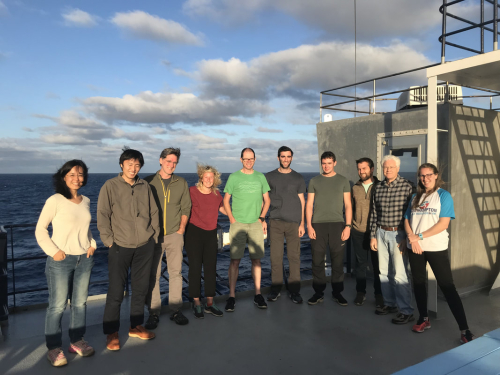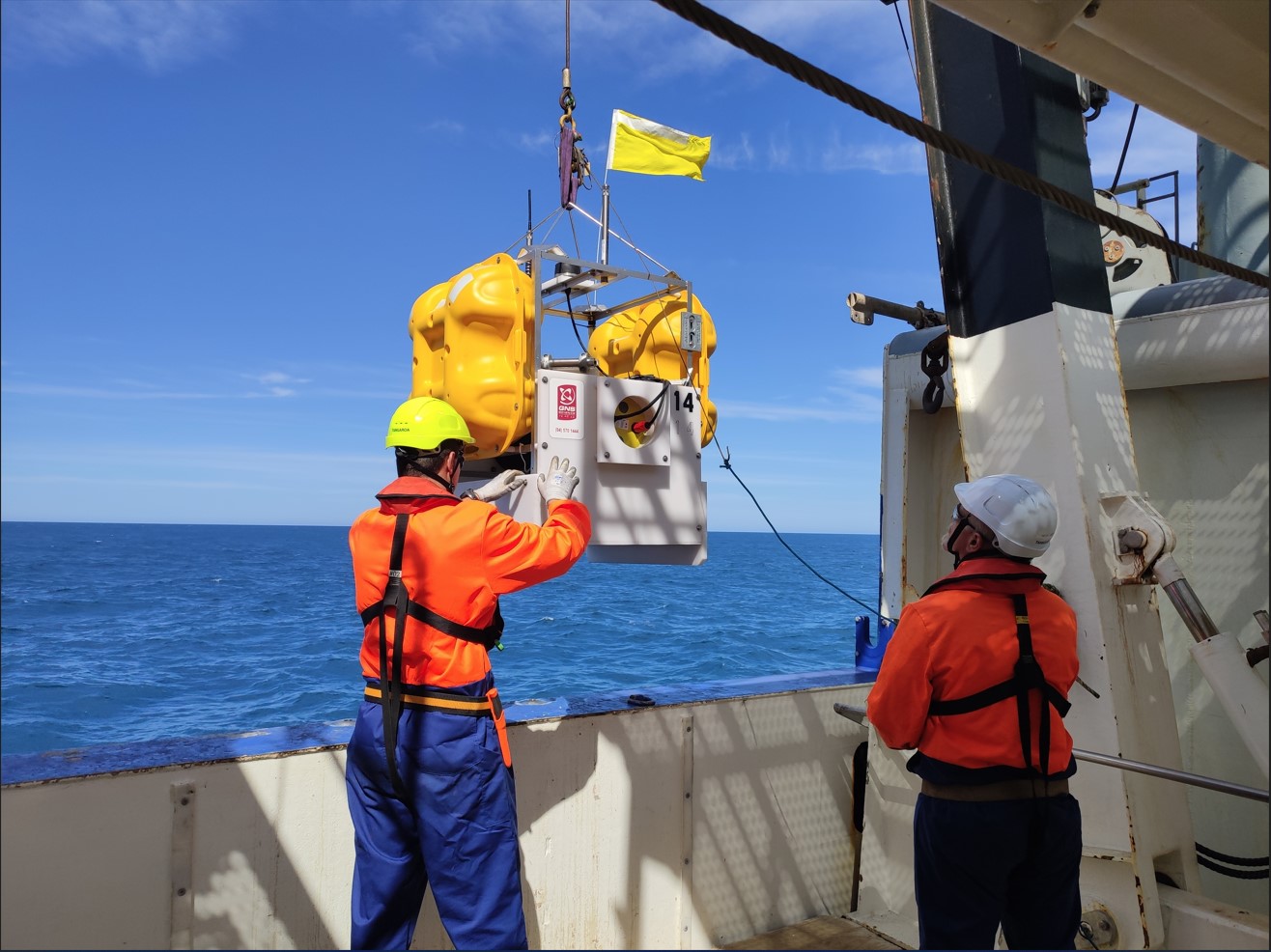
NZ3D Blog #4: All aboard

With all the land seismometers and OBS instruments now in place and waiting patiently for the data to roll in, it’s time for the marine part of our experiment to begin! The vessel we are using is the R/V Marcus G Langseth, a research vessel from Lamont-Doherty Earth Observatory in New York. The science party joined the main ship’s crew in Tauranga and the salty sea life began! The science party on board is a bit different to the land deployment crew. On the Langseth there are a mix PhD students, early career scientists, and more senior staff from the UK, USA, New Zealand and Japan.
First things first, we had a safety drill. We all had to go to our muster stations when the alarm rang and grab a life vest and immersion suit. Everyone then gathered on the bridge and the captain briefed us on what to do in an emergency and we got a demonstration of how to put the immersion suits on. Next was time for us to try and put them on ourselves. All the crew can go from human to lobster in under 60 seconds which, trust me, is no easy feat!!
The R/V Marcus G Langseth is a brilliant research vessel, equipped with all we need to start acquiring our data. The crew are super friendly and enjoy getting the science party up on the decks to help deploy all the kit. The ship will be towing 4 streamers, each 6km long, as well as the acoustic source generators. That’s a lot of kit to be towing!
We started early one morning putting out the streamers one by one to test they were in ship-shape (haha) condition and that all the birds were working and in the right place. Birds are plastic tools that get their names from small wings that protrude either side. These are no ordinary pigeons though! The birds can communicate with each other and the main lab, and the wings can be moved to keep the streamers as straight as possible, stop them from tangling up with each other, and make sure they stay at the right depths. We want our streamers to be 8m below the sea surface.
For more information about the voyage you can read: Hikurangi Seismic Surveying Fact Sheet
Disclaimers and Copyright
While every endeavour has been taken by the East Coast Lab Hikurangi Subduction Zone M9 to ensure that the information on this website is
accurate and up to date, East Coast Lab Hikurangi Subduction Zone M9 shall not be liable for any loss suffered through the use, directly or indirectly, of information on this website. Information contained has been assembled in good faith.
Some of the information available in this site is from the New Zealand Public domain and supplied by relevant
government agencies. East Coast Lab Hikurangi Subduction Zone M9 cannot accept any liability for its accuracy or content.
Portions of the information and material on this site, including data, pages, documents, online
graphics and images are protected by copyright, unless specifically notified to the contrary. Externally sourced
information or material is copyright to the respective provider.
© East Coast Lab Hikurangi Subduction Zone M9 - www.eastcoastlab.org.nz / +64 6 835 9200 / info@eastcoastlab.org.nz
